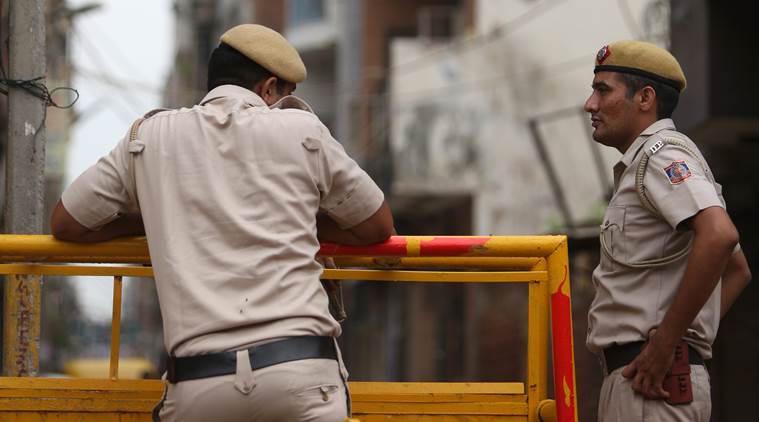
Our newspapers, until recently, were full of BJP’s tagline “Namumkin Ab Mumkin Hai”. There is no doubt that Prime Minister Narendra Modi has taken a number of initiatives in diverse fields, which would raise the standard of living of the common man and transform India into a cleaner, healthier and resurgent nation. Swachch Bharat is gradually becoming a reality. Ayushman Bharat aims to provide healthcare benefit to about 50 crore people. Electricity would appear to have reached every corner of the country. Ujjwala and Sukanya Yojana would go a long way in improving the plight of women, and so on. Different departments came out with their lists of achievements. Even if we make allowance for an element of exaggeration, these initiatives have been laudable and the progress impressive.
It is disappointing, however, that there is an area where even what was mumkin (possible) has not been achieved — it is about reformative changes in the police with a view to transforming it into an instrument of service to the people. The Supreme Court, in a landmark judgment in 2006, clearly said that “the commitment, devotion and accountability of the police has to be only to the rule of law” and that “the supervision and control has to be such that it ensures that the police serves the people without any regard, whatsoever, to the status and position of any person while investigating a crime or taking preventive measures”. The Court issued a slew of directions with a view to insulating the police from extraneous influences, giving it a measure of autonomy in personnel matters and making it more accountable. It is a great pity that even after 12 years, there has been only partial and, in some states, farcical compliance of the directions.
The states are primarily to blame. However, the Centre cannot escape responsibility for its indifference and inaction in the matter. The Police Act Drafting Committee headed by Soli Sorabjee had prepared a Model Police Act in 2006. The expectation was that the Centre would pass an Act on similar lines for Delhi and the Union Territories and that the same model would be adopted at least in those states where the same party held office. Besides, Article 252 of the Constitution gives Parliament the power to legislate for two or more states by consent and lays down that such an Act shall apply to the consenting states “and to any other by which it is adopted through a resolution passed in that behalf by the House or, where there are two Houses, by each of the Houses of the legislature of that State”.
Unfortunately, nothing of the kind happened. Till this day, the Government of India has not taken any definitive action on Sorabjee’s Model Police Act. In the absence of any initiative by the Centre, the states, 17 of them so far, have gone amok with their separate police Acts. It is ironical that while the British India had one police Act for the entire country, we are confronted with a situation where every state has a different Act with sharp differences in essential features.
Justice K T Thomas, who was appointed by the Supreme Court in 2008 to monitor the implementation of its directions, expressed his “dismay over the total indifference (of the states) to the issue of reforms in the functioning of police”. Justice J S Verma, who submitted a comprehensive report on amendments to criminal law in 2012, urged the “states to comply with all six Supreme Court’s directives in order to tackle systemic problems in policing”. It is quite mumkin, but the executive is unfortunately not prepared to give up its zamindari over the police.
The prime minister, while addressing the police chiefs of the country in Guwahati in 2014, raised hopes when he talked of building a SMART police — a police, which would be sensitive, mobile, accountable, responsive and techno-savvy. There has hardly been any follow up action and only some cosmetic steps were taken to augment the manpower and infrastructure of the forces.
It is indeed a tragedy that while the country is forging ahead in different spheres to build a new India, its policing remains mired in a colonial structure. The Acts passed by the states are crude attempts to circumvent the implementation of judicial directions. The Supreme Court has also, for inexplicable reasons, not cracked the whip so far.
The total strength of state police forces is 2.46 million and there are about 25,000 police stations and outposts across the country. It is a formidable strength. Imagine a situation where a common man does not feel inhibited in entering a police station, has a fair degree of confidence that his report would be lodged and investigated! It would be such a sea change. But is the political class keen on bringing about such a transformation? And, are the police officers themselves serious about introducing the much-needed internal reforms, which they could initiate without any political clearance or legislative backup?
We need to understand that stable law and order provides the foundation for sustained economic development. Haryana offers the most recent example of a state suffering a serious economic setback when law and order collapsed in the wake of an agitation over reservation. A healthy democracy also needs a healthy police. In fact, if police is not able to enforce the rule of law and is constrained to take directions from persons of questionable antecedents at the helm, it will be the beginning of the end of democracy.
This article first appeared in the print edition on March 28, 2019 under the title ‘A cop out’. The writer is chairman, Indian Police Foundation.